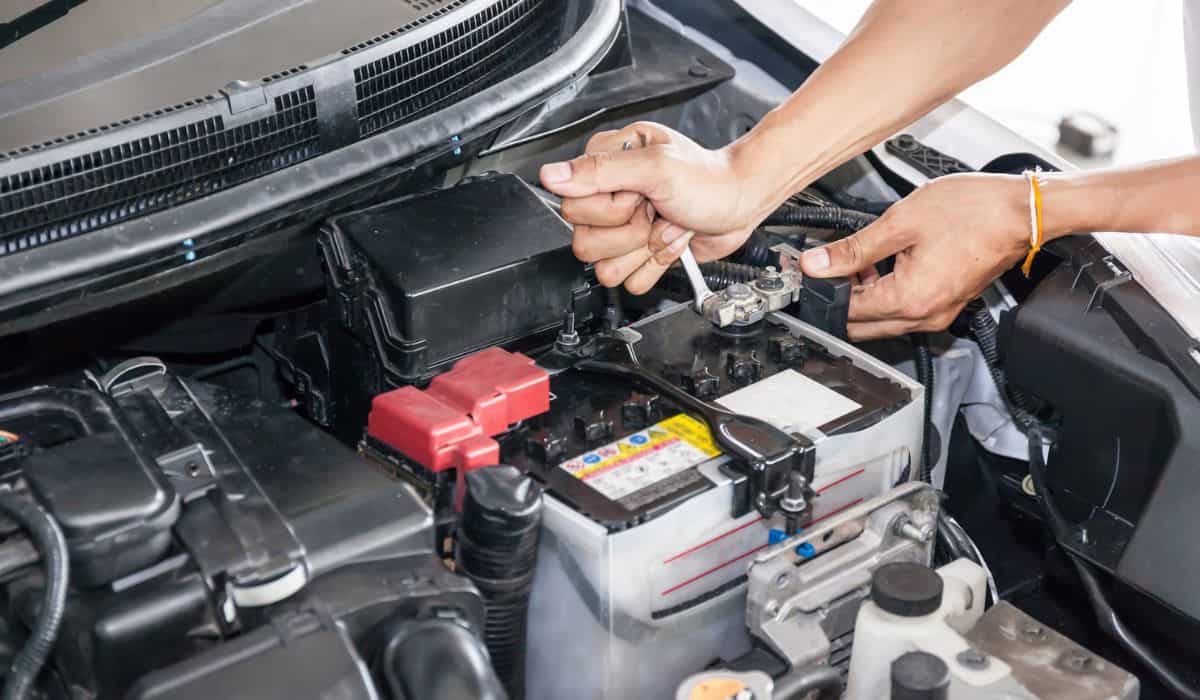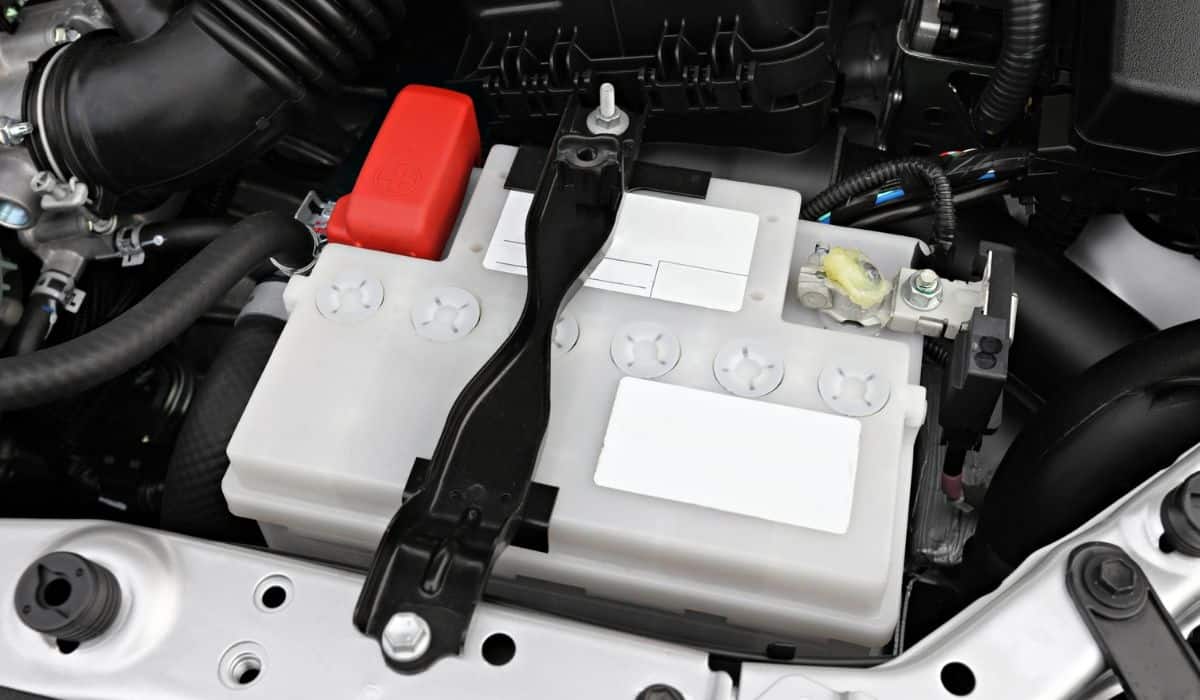Do Car Batteries Come Pre-Charged?
If you just bought — or are planning to buy — a new battery for your car, you’re probably wondering if there’s anything you need to do before hitting the road. So, do you need to charge a new car battery?
Car batteries come pre-charged. However, it’s important to note that they don’t come fully charged (only to about 90%), so it’s best to charge them to full capacity before use. Always purchase car batteries from a reputable business or directly from the manufacturer.
Let’s take a closer look at whether car batteries come pre-charged, when you should replace your car battery, and whether you should run your car while replacing the battery, so that you don’t have to worry about twisting the key in the ignition and hearing only silence.
Do Car Batteries Come Pre-Charged?

Yes, car batteries come pre-charged. While it’s unlikely that they’ll be fully charged, they’ll still have enough juice to start your car. Typically, car batteries are charged to around 90% when you first buy them.
However, keep in mind that lead-acid batteries lose around 5% of their charge every month, so make sure you purchase the newest battery available on the market. It’s also advisable to purchase the battery directly from the manufacturer or from a reputable business.
Make sure you check that the battery is fully sealed and its packaging hasn’t been tampered with before making your purchase as well.
Should New Batteries Be Charged Before Use?
If you have enough time, then you should definitely charge your battery before use. This is because your car’s alternator won’t charge the battery to its full capacity while you’re driving. So, by charging the battery to its full capacity before use, you’ll increase its life expectancy.
With the recent advancements in technology, you can easily charge your new car battery with a safe, high-quality battery charger (on Amazon). The device will transmit a steady charge to the battery, allowing you to safely leave the battery connected for an indefinite period of time.
If you’re not going to use your car for a while, then the charger will also prevent the battery from self-charging. It will recharge a dead battery in around 8-12 hours as well, depending on the size of the battery.
Keep in mind that it’s best to charge your battery every three months. That way, it’ll still hold a full charge, even if your car’s alternator isn’t fully charging the battery.
When Should You Replace a Car Battery?

While it’s hard to gauge the health of a car battery just from the outside, there are still a few telltale signs you should look out for:
Slow Crank
One of the biggest signs that it’s time to replace your car battery is a slow crank. If you hear your car wheezing during ignition, especially in warm weather, then something might be wrong.
The sound might also be because of a weakened alternator that isn’t powering the battery fast enough; the problem may not specifically be the battery itself. Luckily, there are a few tests you can perform to determine whether you need to replace your battery.
A helpful rule of thumb is to inspect your car battery more frequently after three years of use. There are two simple tests you can perform regularly:
The Eye Test
The eye test simply involves lifting the hood and performing a visual inspection of the battery. Look for signs of corrosion on or around the cell connectors holding the battery, a broken or fraying cable, cracks on the side or on top of the battery, or unusual stains.
All these signs indicate that it’s time to replace your battery. Also, make sure you don’t ignore the smell of sulfuric acid if present.
The Load Test
You can perform a load test to gauge your car battery’s charge and capacity with a handheld voltmeter or multimeter. These devices are available online — such as this one (on Amazon) — or at almost any automotive and hardware store.
Here’s what you need to do:
- Set your multimeter to 20 DC volts.
- Pop the hood and connect the prongs to the positive and negative terminals on the battery accordingly.
- Push the multimeter’s start button. Don’t turn on your car yet.
- Look for a reading that steadily maintains 9.6 volts. If it achieves the mark, but then drops continuously, then there’s a problem. If the reading immediately drops to zero, then that’s also a cause for concern.
- Turn on your car’s engine and wait for the reading to hit around 12.6 volts. If it reads higher than 12.9 volts or lower than 12.2 volts, then you either need to remove excess charge or slow charge the battery.
- You can get rid of the excess charge by simply connecting the high-beam headlights.
- You can trickle-charge an undercharged battery using two jumper cables and an electric cord with a plug. Remember that a slower charge is better for a battery’s long-term health than a faster one.
If you feel like your battery is continuously losing its ability to hold a charge, then it may be time for a replacement.
Slow Starting Engine
If your car’s engine takes a long time to start, then it might be a sign of a damaged battery. This is because faulty or worn-out components negatively affect a battery’s ability to generate enough power to start the car.
If you feel that it takes a couple of extra seconds for the engine to start, then your battery might be on its last legs.
Electrical Issues
Keep an eye out for any issues with the electronic components of your car, such as the radio, lights, and dashboard computer. If the radio is acting or the lights appear dimmer than usual, then you may want to check the battery.
Keep in mind that the more electronic components your car has, the faster its battery will die.
How Long Do Car Batteries Typically Last?

There’s no right answer to this question. Some people claim that car batteries typically last around four years, while some say that a life of up to six years is possible. In fact, the life of your battery depends on several different factors:
- A harsher climate, with hot, humid summers and cold winters could negatively affect the overall capacity of your battery.
- Vibration can also shorten the life of your battery, so make sure you’ve securely fastened the battery under the hood and connected all the necessary bolts and brackets.
- Continuously using in-car electronics can tax the battery as well. The headlights, car stereo, backup cameras, assisted driving functions, windshield wipers, heating/AC, and GPS navigation all need power — and they work off the battery.
Voltage recharge rates also affect the life of your car’s battery. Like fast smartphone charging, car batteries also don’t reach 100% capacity automatically. Instead, a larger chunk is recharged in a short time, while the rest is staggered out over a long period.
For instance, the battery might take seven hours to reach a capacity of 80% to 90%, and then take a couple of hours to recharge the remaining 10% to 20%. For this reason, frequently driving short distances can actually reduce your car battery’s long-term power more quickly.
Leaving the headlights on overnight or increased corrosion can also cause “undercharging” and reduce long-term power. This is because constant undercharging results in acid stratification, where the car battery constantly stays at a lower charge and never achieves a full charge.
How Long Do Batteries Run Without Charging?
The answer to this question depends on various factors:
- Overall condition and age of your battery
- Power requirements from your car accessories
- The battery’s design and style, including its reserve power
If you play a normal radio all day or use any charging accessory, then your car battery should still have enough juice to start the engine. However, if you have a newer car with a large infotainment screen or an amplified radio, then the battery may only have one or two hours in reserve.
If you’ve left your car’s lights on overnight, then how long your battery runs will depend on whether it’s the interior lights or headlights, and whether they’re LED lights or normal halogen headlights.
If it’s the headlights, then your battery’s runtime can range anywhere from 30 minutes to several hours, while the battery should last several days if you’ve just left the interior lights on.
If leaving a light on kills the battery quickly, or if the battery dies after powering the radio for only an hour, then it’s highly likely that your battery isn’t holding a full charge and needs to be replaced.
How to Replace a Battery
Once you’ve determined that you need to replace your battery, here’s what you need to do to swap it out yourself:
- Turn off your car and apply the parking brake.
- Take a picture of your car’s battery compartment with your smartphone before you remove the battery. The photo will help you understand how to reconnect the new battery.
- Remove the black (or negative) cable first, and then disconnect the red (positive) one.
- Remove the battery restraint with a wrench. The restraint might be a bar on top or a clip holding the battery in place at the bottom.
- Lift out the battery, and make sure you remove it without tilting it.
- Install the new car battery by reversing all the uninstallation steps.
- Properly dispose of your old lead-acid car battery by taking it somewhere that sells new car batteries, such as Walmart, Costco, or other automotive stores.
Should You Run the Car While Replacing the Battery?
You should never replace a battery while the ignition is on or the engine is running, regardless of the make, model, or year of your car.
In fact, running the car while you’re replacing the battery could result in a high-voltage spike in the electrical system, which could damage both the electronic modules and the charging system.
In fact, even after you install a new battery, you should wait a few hours before running your car. The exact time will vary with each make and model, but it’s best to start your car after leaving it for eight hours or overnight.
Make sure you carefully read the owner’s manual for charging instructions based on the make, model, and year of manufacture of your car.
